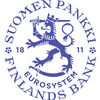October 2023 sees low amount of corporate loan drawdowns

In October 2023, non-financial corporations (excl. housing corporations) drew down new loans1 from banks operating in Finland to a total of EUR 1.3 billion – the smallest amount in October since 2010. The average interest rate on new corporate loans was 5.70%, up 0.18 percentage points on September 2023. Due to the low level of drawdowns, the stock of corporate loans (EUR 58.5 billion) contracted in October by 3.0% from a year earlier.
The largest rise in the average interest rates on new corporate loans was seen in the category of large corporate loans, i.e. loans of over EUR 1 million. The average interest on these loans rose by 0.15 percentage points from September, to stand at 5.44% in October 2023. The average interest on small loans of less than EUR 250,000 was 6.32%, and the average interest on medium-sized loans (over EUR 250,000 and up to EUR 1 million) was 6.19%.
Of the new corporate loans drawn down in October, 13.5% were taken out by firms in the manufacturing sector. This was less than usual. Correspondingly, the real estate sector’s share of new drawdowns (21.9%) was higher than usual.
Most (55%) of the corporate loans drawn down in October were with a maturity of over 1 and up to 5 years, and the average interest rate on these loans was 5.68%. The average interest on new corporate loans with up to one year’s maturity was 6.43%. These loans accounted for 19% of total corporate loan drawdowns. The average interest on long-term corporate loans with over 5 years’ maturity was 5.3%.
Loans
Finnish households’ drawdowns of new housing loans amounted to EUR 1.1 billion in October 2023, a decline of EUR 140 million from October a year earlier. Of the total, investment property loans accounted for EUR 100 million. The average interest rate on new housing loans rose from September, to 4.73%. At the end of October 2023, the stock of housing loans stood at EUR 106.5 billion, and the annual growth rate of the loan stock was -1.9%. Investment property loans accounted for EUR 8.6 billion of the housing loan stock. Of the total stock Finnish households’ loans at the end of October 2023, consumer credit amounted to EUR 17.1 billion and other loans, EUR 17.7 billion.
Drawdowns of new loans2 by Finnish housing corporations amounted to EUR 560 million in October 2023. The average interest rate on these rose from September and stood at 5.38%. At the end of October, the stock of loans to Finnish housing corporations totalled EUR 43.8 billion.
Deposits
At the end of October 2023, the stock of Finnish households’ deposits stood at EUR 108.4 billion, and the average interest rate on the deposits was 1.03%. Overnight deposits accounted for EUR 72.0 billion and deposits with agreed maturity for EUR 9.7 billion of the deposit stock. In October, households concluded EUR 1,110 million of new agreements on deposits with agreed maturity, at an average interest rate of 3.36%.
For further information, please contact:
- Tuomas Nummelin, tel. +358 9 183 2373, email: tuomas.nummelin(at)bof.fi
- Usva Topo, tel. +358 9 183 2056, email: usva.topo(at)bof.fi
The next news release on money and banking statistics will be published at 10:00 on 4 January 2024.
Related statistical data and graphs are also available on the Bank of Finland website at https://www.suomenpankki.fi/en/statistics2/.
1 Excl. overdrafts and credit card credit.
2 Excl. overdrafts and credit card credit.
The Bank of Finland is the national monetary authority and central bank of Finland. At the same time, it is also a part of the Eurosystem, which is responsible for monetary policy and other central bank tasks in the euro area and administers use of the world’s second largest currency – the euro.
Subscribe to releases from Suomen Pankki
Subscribe to all the latest releases from Suomen Pankki by registering your e-mail address below. You can unsubscribe at any time.
Latest releases from Suomen Pankki
Kutsu medialle: Suomen Pankin tiedotustilaisuus 19.12.2025 Suomen talouden näkymistä17.12.2025 09:00:00 EET | Kutsu
Elpyykö Suomen talous? Miten kauppasota ja maailmantilanteeseen liittyvä epävarmuus vaikuttaa talouskehitykseemme? Mitkä ovat julkisen talouden näkymät?
Aleksi Grym blir avdelningschef för Finlands Banks betalningssystemsavdelning16.12.2025 16:42:15 EET | Pressmeddelande
Pol.lic., ekon. mag. Aleksi Grym har utnämnts till avdelningschef för Finlands Banks betalningssystemsavdelning från och med den 1 mars 2026. Utnämningen gäller för en period på fem år.
Aleksi Grym maksujärjestelmät-osaston osastopäälliköksi16.12.2025 16:42:15 EET | Tiedote
Suomen Pankin maksujärjestelmät-osaston osastopäälliköksi on nimitetty VTL, KTM Aleksi Grym. Nimitys on tehty viiden vuoden määräajaksi 1.3.2026 alkaen.
Aleksi Grym appointed Head of Payment Systems Department16.12.2025 16:42:15 EET | Press release
Aleksi Grym, Lic.Soc.Sc, MSc (Econ. & Bus. Adm.), has been appointed Head of Department at the Bank of Finland’s Payment Systems Department. The appointment is for a five-year term effective from 1 March 2026.
Fler kortbetalningar till försäljare inom kultur och fritid i juli–september 2025 än tidigare16.12.2025 10:00:00 EET | Pressmeddelande
Fler kortbetalningar i juli–september 2025 än tidigare. Ökningen förklaras sektorspecifikt huvudsakligen av tre sektorer: kultur och fritid, livsmedel samt konsumtion av andra varor och tjänster. För två sektorer minskade kortbetalningarnas totalsumma i juli–september 2025.
In our pressroom you can read all our latest releases, find our press contacts, images, documents and other relevant information about us.
Visit our pressroom